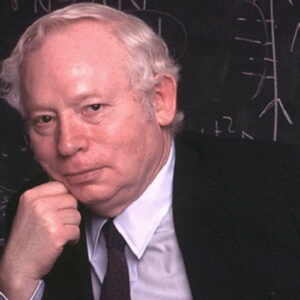Steven Weinberg is a theoretical physicist who shared the Nobel Prize in Physics with Abdus Salam and Sheldon Glashow for “contributions to the theory of the unified weak and electromagnetic interaction between elementary particles, including, among other things, the prediction of the weak neutral current.” He has won several other significant accolades for his work in the fields of fundamental particles and cosmology, in addition to the Nobel Prize. He is a frequent contributor to ‘The New York Review of Books’ and other magazines, and has authored a number of essays on a variety of issues. He developed a profound interest in all subjects of scientific inquiry as a young boy, and his father warmly encouraged him to follow his love. By the age of 16, he had realized that theoretical physics was the topic that he was most interested in. He attended the same high school and was in the same class as Sheldon Glashow, with whom he would share a Nobel Prize a few years later. He is still regarded as one of the world’s top scientists today. He served as President of the Philosophical Society of Texas and as a consultant for the United States Arms Control and Disarmament Agency.
Childhood and Adolescence
Frederick and Eva Weinberg raised him in New York City. From an early age, he was drawn to science.
He went to Bronx High School of Science, where he received his diploma in 1950. Sheldon Glashow, another future physicist, was a classmate there.
In 1954, he graduated from Cornell University with a bachelor’s degree in physics and went on to the Institute for Theoretical Physics in Copenhagen to pursue his PhD studies. During this period, with the support of David Frisch and Gunnar Kallen, he began his research.
He returned to the United States and completed his doctoral thesis at Princeton University under the supervision of Sam Treiman, getting his Ph.D. in 1957.
Career of Steven Weinberg
From 1957 to 1959, he worked as a postdoctoral researcher at Columbia University. He worked at Berkeley from 1959 to 1966. He studied weak interaction currents, quantum field theory, symmetry breaking, scattering theory, and many other issues.
During 1961-62, he developed an interest in the science of astrophysics. He began working on his book, ‘Gravitation and Cosmology,’ after publishing a few studies on neutrinos. He began working on current algebra and the concept of spontaneous symmetry breaking in 1965.
In 1966, he left Berkeley to become the Loeb Lecturer at Harvard, a position he held until 1969. He also taught at M.I.T. as a visiting professor.
While a visiting professor at M.I.T., he worked on broken symmetries, current algebra, and renormalization theory. In 1969, he was appointed to the Physics Department of M.I.T., where he was chaired by Viki Weisskopf.
In 1973, he took the Higgins Professorship of Physics at Harvard University. He was also offered the position of Senior Scientist at the Smithsonian Astrophysical Observatory at the same time.
He worked on a unified theory of weak and electromagnetic interactions in the 1970s. He also created quantum chromodynamics, a theory of strong interactions.
In 1977, he wrote ‘The First Three Minutes: A Modern View of the Origin of the Universe.’ He attempted to describe how the universe formed following the Big Bang in its early stages.
His work on the renormalization part of quantum field theory, which he began in 1979, was extremely important in the field of theoretical physics. His technique paved the way for the creation of quantum gravity’s effective theory, heavy quark effective field theory, and low-energy QCD.
In 1982, he was named to the University of Texas at Austin’s Jack S. Josey-Welch Foundation Regents Chair in Science. He established the Physics Department’s Theory Group there.
In April 1999, he spoke at the American Association for the Advancement of Science’s Conference on Cosmic Design, opposing criticisms of evolution and cosmology ideas. This discussion was the basis for the essay ‘A Designer Universe?’
He is a well-known public advocate for science who publishes essays to the ‘New York Review of Books’ on a regular basis. He has written multiple science books that blend scientific elements with historical, philosophical, and atheistic elements.
Major Projects of Steven Weinberg
His work on the unification of the weak force and electromagnetic interaction between elementary particles is his most well-known achievement. He made significant contributions to particle physics, quantum field theory, gravity, superstrings, and cosmology.
Achievements & Awards
He shared the Nobel Prize in Physics with Sheldon Glashow and Abdus Salam in 1979 for their work on electroweak unification based on spontaneous symmetry breaking.
In 2004, the American Philosophical Society awarded him the Benjamin Franklin Medal for Distinguished Achievement in the Sciences, stating that he is “considered by many to be the finest theoretical physicist alive in the world today.”
Personal History and Legacy
In 1954, he married Louise. His wife is a law professor. The pair has a daughter together.
Estimated net worth
Steven Weinberg holds a combined appointment in the departments of Physics and Astronomy at the University of Texas at Austin, where he holds the Josey Regental Chair in Science. His net worth is estimated to be $536,000 dollars.


